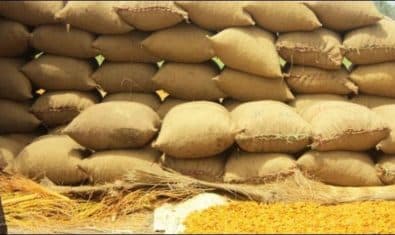The remittance inflows to Pakistan had risen by about 17 percent to a record high of $26.1 billion in 2020, with the biggest growth coming from Saudi Arabia, followed by the European Union countries and the United Arab Emirates (UAE), as observed by the World Bank.
According to its latest ‘Migration and Development Brief’ report, the volume of remittances to Bangladesh, Pakistan, and Sri Lanka in Q1 2021 indicates that this increase has been sustained.
The report also showed that the inward remittance flows to South Asia had risen by about 5.2 percent in 2020 to $147 billion, driven by a surge in inflows to Bangladesh and Pakistan.
In Pakistan, the remittances had risen by over 17 percent to a record high of $26.1 billion, the remittances from Saudi Arabia had increased by over 46 percent, by 25 percent from the European Union countries, and by 19 percent from the UAE. In Bangladesh, the remittances had also shown a brisk uptick in 2020 (18.4 percent), and Sri Lanka had had a remittance growth of 5.8 percent. In contrast, the remittances to Nepal had fallen by about two percent, reflecting a decline of 17 percent in Q1 2020.
ALSO READ
Saudi Arabia to Loan $500 Million to Pakistan for Several Projects
In the region, Nepal has the greatest reliance on remittances at 23.5 percent of its GDP, followed by Pakistan (9.9 percent), and Sri Lanka (8.8 percent).
The number of migrant workers from Pakistan had also dropped from 625,000 in 2019 to 225,000 in 2020, primarily due to a rise in the returning migrant workers from the GCC countries. In the south Indian state of Kerala, an estimated 1.2 million migrant workers — out of more than 4 million who had worked in the GCC countries and contributed 30 percent of the state’s income — had returned in 2020 after the pandemic had left them jobless. Additionally, the low-skilled workers had been the hardest hit.
There is no official data on the exact numbers of migrant workers that had returned to Nepal since the beginning of the pandemic. Also, the number of Nepali migrant workers who had gotten their work permits renewed in the first seven months of FY 2020/21 had tumbled by 65.3 percent from the previous year. In India, which is the region’s largest recipient country by far, the remittances had fallen by just 0.2 percent in 2020, with much of the decline due to a 17 percent drop in the remittances from the UAE which had offset the resilient flows from the United States of America and other host countries.
In Pakistan, the remittances had risen by about 17 percent, with the biggest growth coming from Saudi Arabia, followed by the European Union countries and the UAE. The remittances in Bangladesh had also shown a brisk uptick in 2020 (18.4 percent), and Sri Lanka had had a remittance growth of 5.8 percent.
Conversely, the remittances to Nepal had fallen by about two percent, reflecting a 17 percent decline in the first quarter of 2020. It has been projected that remittances to the region in 2021 will be slightly slowed to 3.5 percent due to a moderation of growth in the high-income economies and an expected drop in migration to the GCC countries.
The remittance flows to Bangladesh and Pakistan were also influenced by idiosyncratic factors like the cancellation of the hajj pilgrimage to Mecca, the floods in Bangladesh in July 2020, and the tax incentives offered to attract remittances.
In 2020, the deployment of workers to the GCC countries, Malaysia, Hong Kong SAR, and China, had declined by over 70 percent from the Philippines, by 68 percent from Bangladesh, by 64 percent from Pakistan, and by 60 percent from Indonesia.
The number of foreign workers had fallen dramatically in Saudi Arabia in 2020, with more than 257,000 leaving in Q3 alone (when a yearly total of 1.2 million return migrants were expected).
The average cost of sending $200 to the region had been 4.9 percent in the fourth quarter of 2020, which was the lowest among all the regions. Some of the lowest-cost corridors originating in the GCC countries and Singapore had costs below the SDG target of three percent because of high volumes, competitive markets, and the deployment of technology. However, the costs are well over 10 percent in the highest-cost corridors.
ALSO READ
Technical Malfunction: Careem Users Charged Thousands Extra for Rides
The brief noted that despite the pandemic, the remittance flows had remained resilient in 2020, registering a smaller decline than what had been projected previously. The officially recorded remittance flows to low-income and middle-income countries had reached $540 billion in 2020, which had been just 1.6 percent below 2019’s total of $548 billion.
The decline in the remittance flows in 2020 had been smaller than the one during the 2009 global financial crisis (4.8 percent). It was also much lower than the fall in the foreign direct investment (FDI) flows to the low-income and middle-income countries, which, excluding flows to China, had fallen by over 30 percent in 2020. Consequently, the remittance flows to the low-income and middle-income countries had surpassed the sum of the FDI ($259 billion) and the overseas development assistance ($179 billion) in 2020.
The main drivers for the steady flow included a fiscal stimulus that had resulted in better than expected economic conditions in the host countries, a shift in flows from cash to digital and from informal to formal channels, and the cyclical movements in the oil prices and the currency exchange rates. The true size of the remittances, which includes formal and informal flows, is believed to be larger than the officially reported data, although the extent of the impact of the pandemic on informal flows is unclear, the report detailed.






















